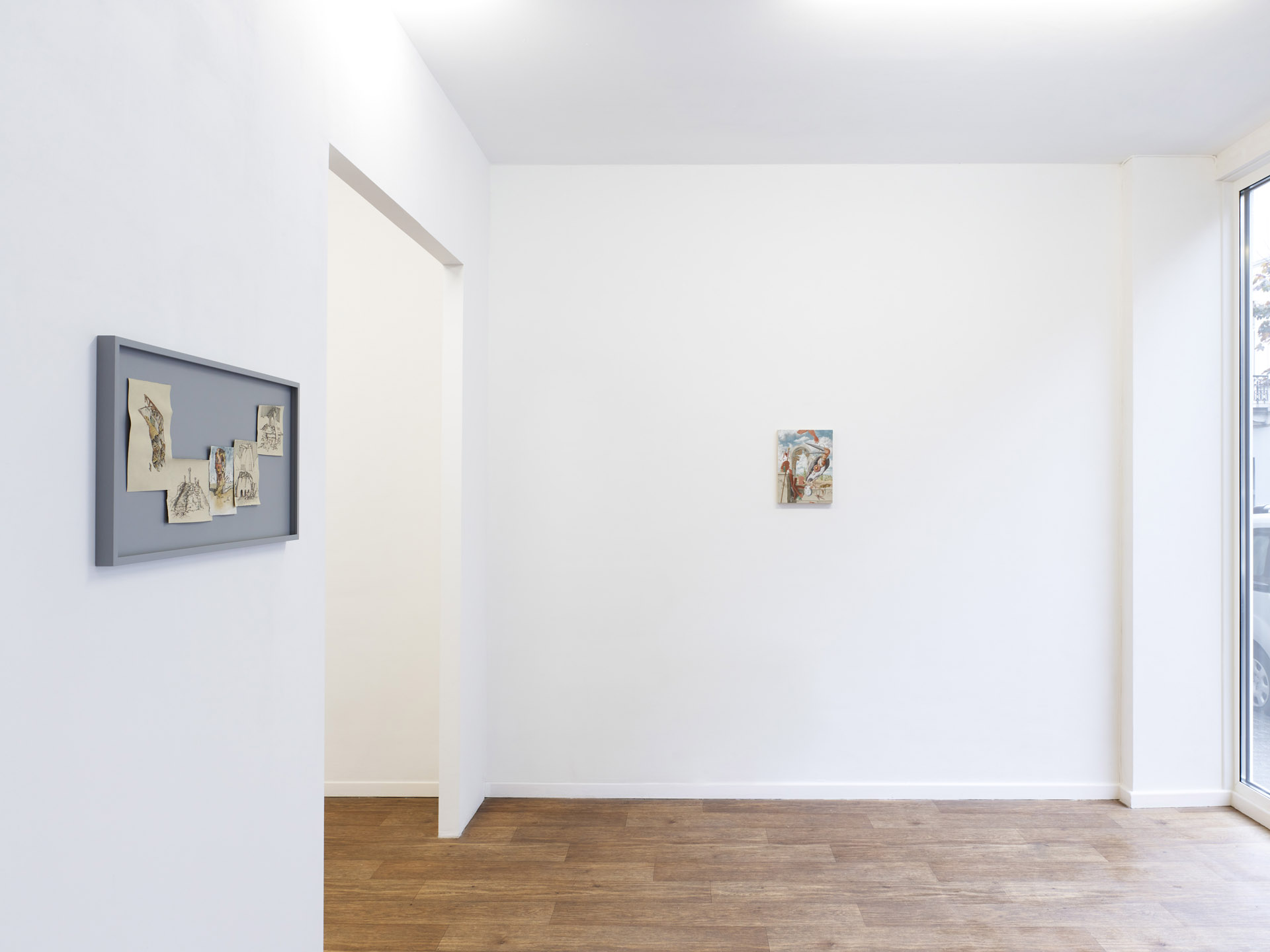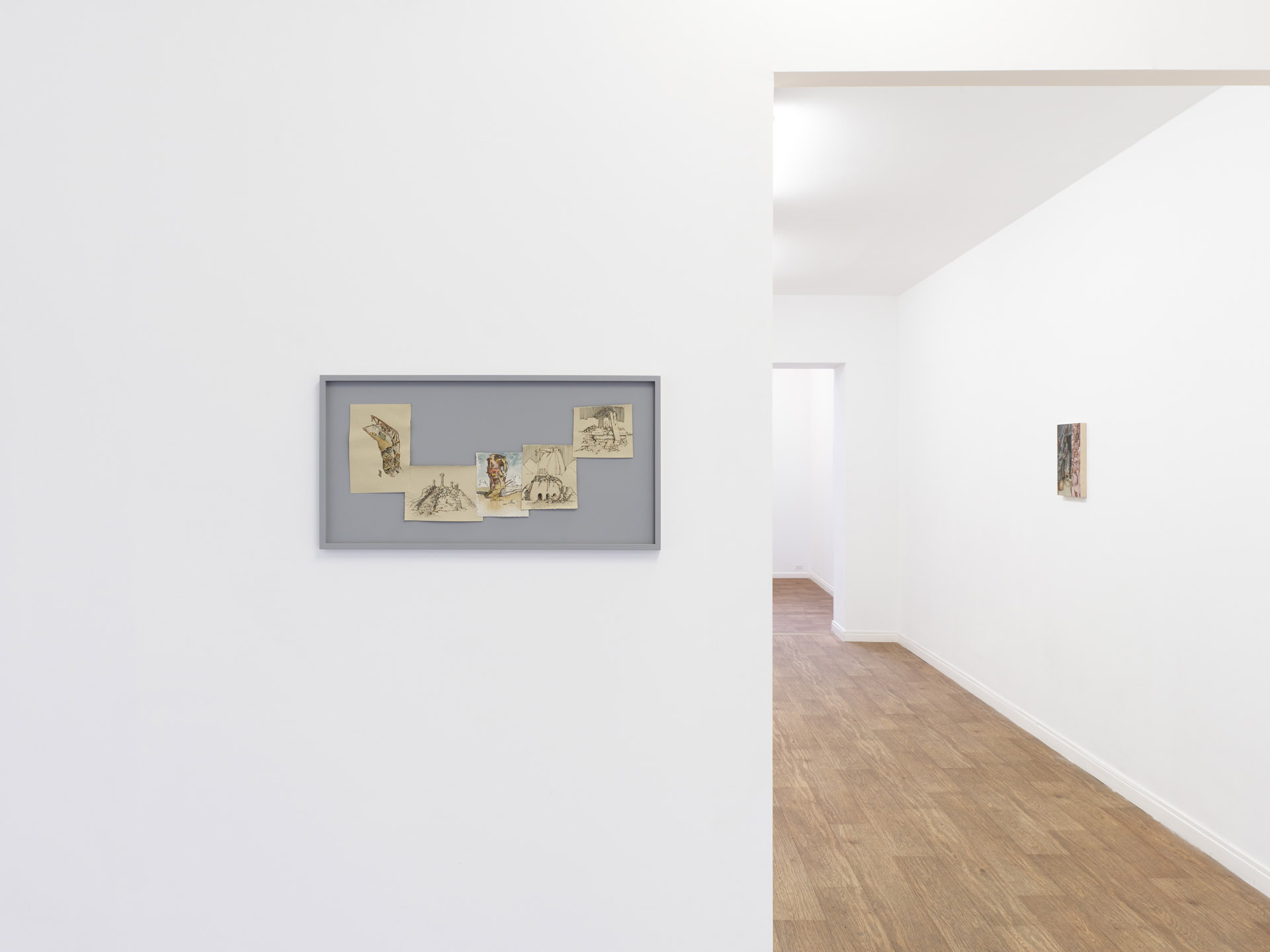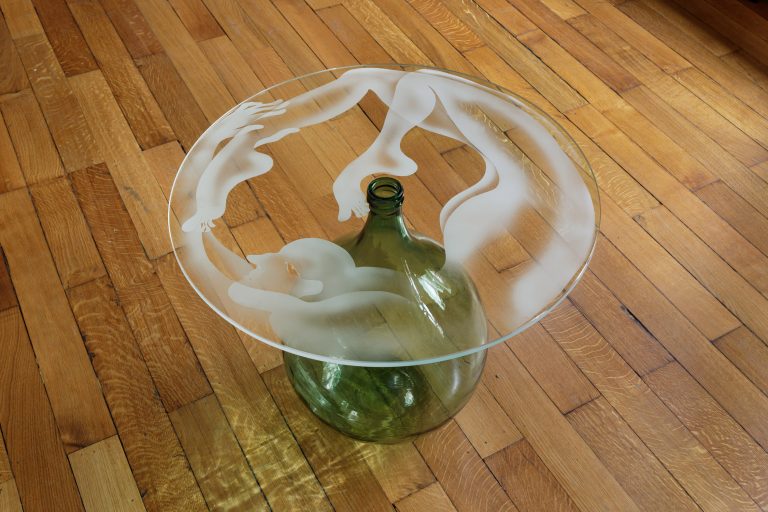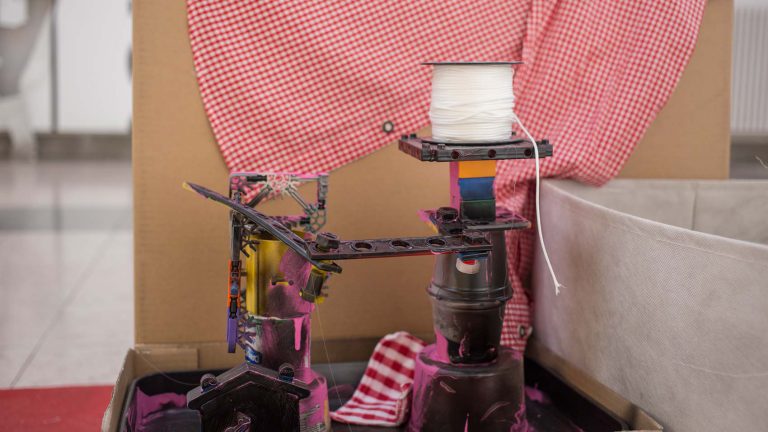Artist: Jannis Marwitz
Exhibition title: Onions
Venue: Damien & The Love Guru, Brussels, Belgium
Date: November 13 – December 18, 2021
Photography: © Kristien Daem / courtesy of the artist and Damien & The Love Guru
Nous Onions, or: the Four Seasons
Spring Onions (ciboule or oignion d’hiver in French, Frühlingszwiebel or Winterzwiebel in German, lenteui or sintjansui in Dutch) are sowed between March and May. Originating from Asia, where they have been cultivated for 2000 years, Spring Onions are now common throughout the globe. Since this plant is perennial and grows all year round it can be harvested in Winter and early Spring, giving a touch of green to foods when green leaves are scarcely available.
In 1966, Watteau’s depiction of Spring burned in a fire. Painted originally for the dining room of Watteau‘s patron M. Crozat as part of a series of the Four Seasons, it was supposed to be hung relatively high – a supraporte (‘over a door’). Therefore, the size of the painting – or to be more precise, the size of the depicted figures – is larger than in other Watteau paintings. [While Autumn and Winter disappeared two centuries ago, the only still-existing work in the series of four is Ceres (Sum-mer), now in the National Gallery of Art in Washington. The size of this work is registered in the catalogue as being 141.6 cm tall and 115.7 cm wide; all the works in this series have an oval shape. Although I couldn’t find the exact measurements of the Spring painting, it must have had similar dimensions.] The Comte de Caylus, normally a big admirer of Watteau’s work, did not hold it in high esteem: “This deficiency in the practice of drawing put it beyond his reach to paint or compose anything heroic or allegorical, much less render large-scale figures . . . ”
In the last existing photograph of Spring by Watteau we see Flora being crowned with a wreath of flowers by her future husband Zephyr, the god of the West Wind. If we compare this photo with the etching that was made for the Recueil Jullienne (the compendium of prints after Watteau’s work) we see furthermore that a bull and a ram (depictions for Taurus and Aries) as well as two putti are no longer visible in the photo of the painting. Maybe they were overpainted?
In the early morning of May 5th 1842, a fire started in a little shed in Hamburg (a storage for rags and cigarettes). Soon other warehouses were ablaze. The fire consumed all kinds of goods and things. Foresight-ed workers emptied hundreds of barrels of high-proof Arrak into the canals, not knowing that from there the fireman would source their water to fight the flames. A strong West Wind blew flames and sparks over the city. In a desperate attempt, officials tore down buildings to combat the overleaping of the flames. Only on the third day, on May 8th the waters of the Alster (an artificial lake) and some broader canals put the fires to an end, leaving ten thousand inhabitants without a home. Thousands of flats, warehouses and churches were reduced to rubble – a quarter of the city’s surface.
Hyakinthos, a beautiful Spartan prince, was the lover of Apollo. The god of the sun, poetry, music and dance had many competitors (Zephyr being one of them) but Hyakinthos chose Apollo over all of them. One day, the two of them were training with the discus. After a strong throw of Apollo, Zephyr – drunk with jealousy – blew against the discus causing it to bounce back, hitting Hyacinth‘s head. He was immediately dead. In desperate grief Apollo made a flower grow on the spot where Hyakinthos died. The blossom’s petals, in their formation, should forever depict the sound of suffering and despair: “AI AI” – the hyacinth. Ovid writes about the budding of this bulbous perennial plant:
“. . . as often as the Spring chases away the Winter and the rain-bringing Pisces in the zodiac is followed by Aries, so often you arise anew and bloom on green lawn.”
Jannis Marwitz, Onions, 2021, exhibition view, Damien & The Love Guru, Brussels
Jannis Marwitz, Onions, 2021, exhibition view, Damien & The Love Guru, Brussels
Jannis Marwitz, Onions, 2021, exhibition view, Damien & The Love Guru, Brussels
Jannis Marwitz, Onions, 2021, exhibition view, Damien & The Love Guru, Brussels
Jannis Marwitz, Onions, 2021, exhibition view, Damien & The Love Guru, Brussels
Jannis Marwitz, Onions, 2021, exhibition view, Damien & The Love Guru, Brussels
Jannis Marwitz, Onions, 2021, exhibition view, Damien & The Love Guru, Brussels
Jannis Marwitz, Onions, 2021, exhibition view, Damien & The Love Guru, Brussels
Jannis Marwitz, Onions, 2021, exhibition view, Damien & The Love Guru, Brussels
Jannis Marwitz, Onions, 2021, exhibition view, Damien & The Love Guru, Brussels
Jannis Marwitz, Onions, 2021, exhibition view, Damien & The Love Guru, Brussels
Jannis Marwitz, Onions, 2021, exhibition view, Damien & The Love Guru, Brussels
Jannis Marwitz, Onions, 2021, exhibition view, Damien & The Love Guru, Brussels
Jannis Marwitz, Onions, 2021, exhibition view, Damien & The Love Guru, Brussels
Jannis Marwitz, Onions, 2021, exhibition view, Damien & The Love Guru, Brussels
Jannis Marwitz, Onions, 2021, exhibition view, Damien & The Love Guru, Brussels
Jannis Marwitz, Onions, 2021, exhibition view, Damien & The Love Guru, Brussels
Jannis Marwitz, Onions, 2021, exhibition view, Damien & The Love Guru, Brussels
Jannis Marwitz, Onions, 2021, exhibition view, Damien & The Love Guru, Brussels
Jannis Marwitz, Onions, 2021, exhibition view, Damien & The Love Guru, Brussels
Jannis Marwitz, Untitled, 2021, Tempera on wood panel, 25 × 20 cm
Jannis Marwitz, Self-Portrait as a Burning Shed / Watteau’s “Spring” (1717/1718) Burned in 1966, 2021, Tempera on wood panel, 30 × 20 cm
Jannis Marwitz, L’Oiseau Decoré, 2021, Tempera on wood panel 32 × 24 cm
Jannis Marwitz, Fall of the Rebel Angels over Grand Place, 2021, Tempera on wood panel 35 × 25 cm
Jannis Marwitz, 6 drawings, 2021, Ink on paper (framed) 35 × 72 cm
Jannis Marwitz, 5 drawings, 2021, Ink on paper (framed) 35 × 68 cm
Jannis Marwitz, 2 drawings, 2021, Ink on paper (framed) 28 × 33 cm

































